Getting ahead of the curve: Why restaurants are struggling to manage margins, and what they can do to fix it.
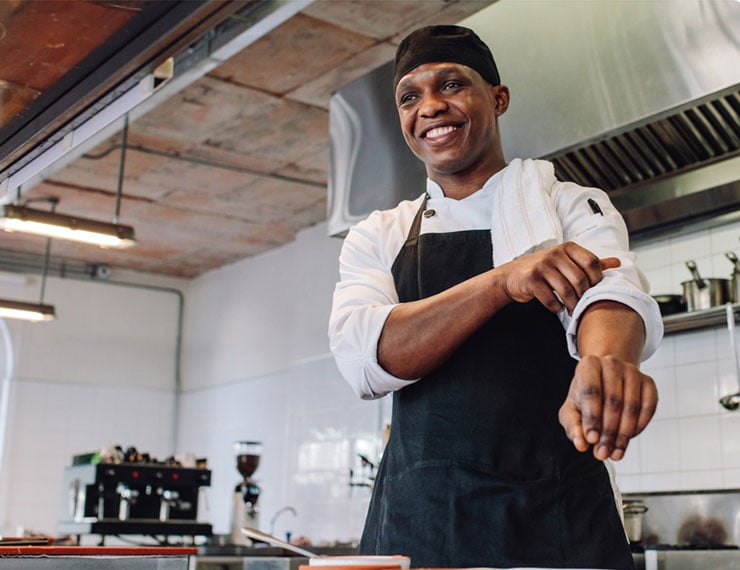
Be a speedboat, not an oil tanker

Look at the chart above and ask yourself two questions:
- Are we responding fast enough to the wholesale prices?
- What is the delay costing us?
There’s a good chance that your answer to 1 is that you aren’t. Which means that your answer to 2 is ‘profits’.
We’re going to cover some of the ways you can identify issues with your business and suggest some solutions for that problem. If you’d like to talk directly to one of our team members about these issues and how you can find the solution that works for you, book a demo today.
Spotting the quickest wins
We live in a dynamic, constantly evolving world. You may think you’re responding quickly because you’ve rolled out your summer menu just as the sun starts shining, but how long did the planning take just to decide on subtle recipe changes to last year’s offering?
Maybe you can’t see what the scale of the immediate win will be if you change prices to manage food costs. Or more likely, you worry that customers won’t be happy to pay what you want to charge now.
Nobody wants to be the oil tanker that takes forever to make a course correction, instead wouldn’t you rather be a speedboat dodging around obstacles and leaving competitors in their wake?
The solution? Data. You need lots of data and some actionable insights.
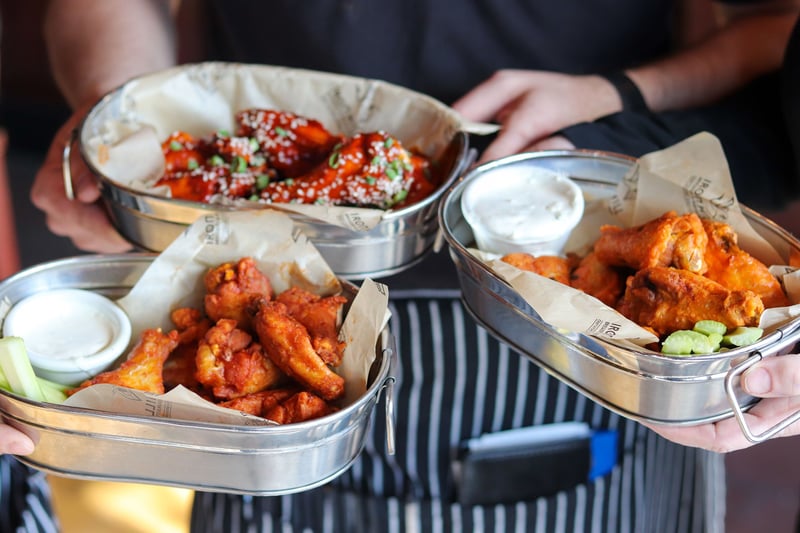
Get out of the slow-to-react mindset
George Wetz, Yumpingo’s CEO, believes that people are already learning to expect dynamic price fluctuations elsewhere in their purchasing choices. “Dynamic pricing is working for other industries, and it can work hard for the restaurant sector. If we consider the music industry and live performances for example, that’s a high-brand-impact world with the same brand loyalty that we see in the way guests remain loyal to restaurants. And we’re seeing artists like Beyonce and Taylor Swift ticket prices increasing by up to 800%, according to Ticketmaster.”
“This tells us one thing, that customers are already on that journey of expectation around seeing their favorite brands increase (or decrease) pricing according to economic changes.”
Long-term growth thinking
While we live in a time when there is a need to spot and act on every opportunity to optimize profit opportunities, we ask, is there a new way to think about growing profits while passing cost savings on to customers? Is the answer to get back into long-term growth thinking and away from short-term cost-savings?
Not passing cost-savings on to customers isn’t always a business strategy though, it can happen because of the time it takes to design and print new menus and update your POS data.
If you let it slide for one quarter, you’re in danger of your menu pricing lagging behind grocery prices, consumer prices and food costs.
Wholesale food prices are fast to adapt to economic changes and grocery prices follow those changes closely, but menu prices are a lot less reactive (there is less variation). Increases in menu costs happen typically 6 months after the economic change has hit, and most businesses do not react enough. Decreases in menu costs take even longer to adjust for affecting competitiveness.
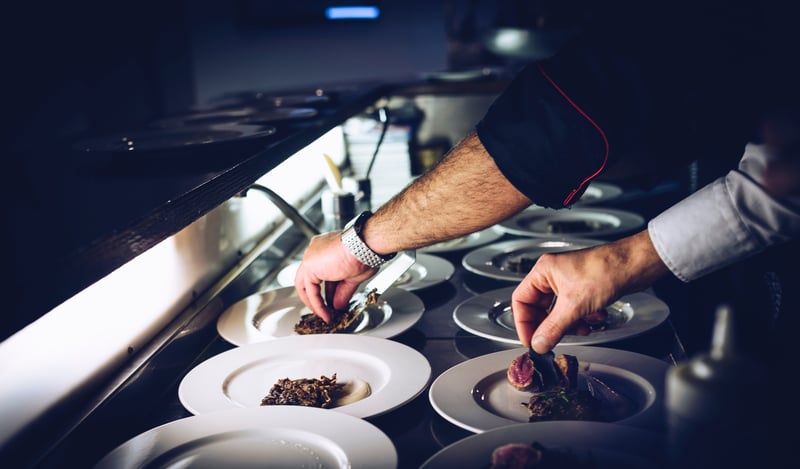
Margin squeezes
Periods of rapid fluctuation like the contemporary economical climate mean restaurants can experience a noticeable margin squeeze because what you’re charging customers is lagging behind price increases.
What causes the delay?
There are a number of issues at play in this delay, including;
- Competitive pressure,
- Contractual agreements,
- Limited resourcing.
But ultimately the main issue will be a lack of quality guest sentiment data and a granular breakdown of that data that gives you actionable insights.
Avoiding decision paralysis from unreliable data insights
There is an understandable fear of how your guests will react to price increases and how it could affect sales. The lack of dependable insight inevitably results in a difficulty in decision-making and delays.
A price worth paying?
There’s a lot of work involved in changing prices and it’s often easier to stick with existing prices for longer than you should because you don’t have the confidence that the potential positives outweigh the effort and the risk of making a mistake.
How to fix it – dynamic pricing
Before we look at some actionable changes you can make, let’s consider some adjacent industries where dynamic pricing has delivered revenue increases.
Music
Music artists such as Beyonce or Taylor Swift can see up to 800% increase in revenues when using dynamic pricing *Ticketmaster 2022
Hotels
15-20% increase in revenue and a 5-10% increase in occupancy compared to hotels that did not use dynamic pricing. *Hotelogix Data 2022
Airlines
The airline industry typically achieves 3–5 percent revenue gains with revenue management and dynamic pricing. *Dolan & Simon Study

Like those industries mentioned above, restaurants are complex. But instead of a ticket or a single hotel room, restaurants have to take into account product mix reporting when it comes time to make some critical pricing decisions And just when you think you understand what it is that guests are ordering and what is selling well, you realize that, actually, you’re only really seeing half the picture.
As a member of your restaurant’s senior leadership team, you’ve probably sat in one of your venues on numerous occasions, seeing items that are high-sellers being returned half eaten to the kitchens. They may look great on the menu, be sold well by servers, but just aren’t delivering on the brand promise. Just because a guest orders a menu item doesn’t mean they loved it and would order it again.
The missing ingredient: NPS
You’re missing vital NPS, value and portion perception insights, which Yumpingo can solve by asking guests for detailed menu item feedback.
You can then manage price elasticity of a menu item and the impact changing the pricing of a dish has on the frequency of it being ordered. This can be affected by factors including:
- Restaurant type
- Service style
- Meal period
- Menu category
For highly price-elastic dishes, a small change to price goes a long way towards changing order frequency as well as value perception.
How will guests react?
Most of the fear of transparent menu pricing changes is a lack of understanding of what the guest will think and do as a result.
The solution? Track guest sentiment in real time, so you can test changes and see what effect it has.
Ultimately the fear of transparent menu pricing changes is actually a lack of understanding of what the guest will think and do as a result. The solution is to track this in real time so you can test changes and see what effect it has.
Ben Keggans, Executive Chef for TRG Leisure Brands’ Frankie & Benny’s says, “I could be sitting in a restaurant and I can watch [using Yumpingo] what is going on with guests and what they’re saying in that particular restaurant.”
Across 2022 and 200,000+ reviews, we found that at the start of the inflationary period there was an initial spike in concerns about pricing and value, but relatively quickly guests became comfortable with the situation and understood the reasons.
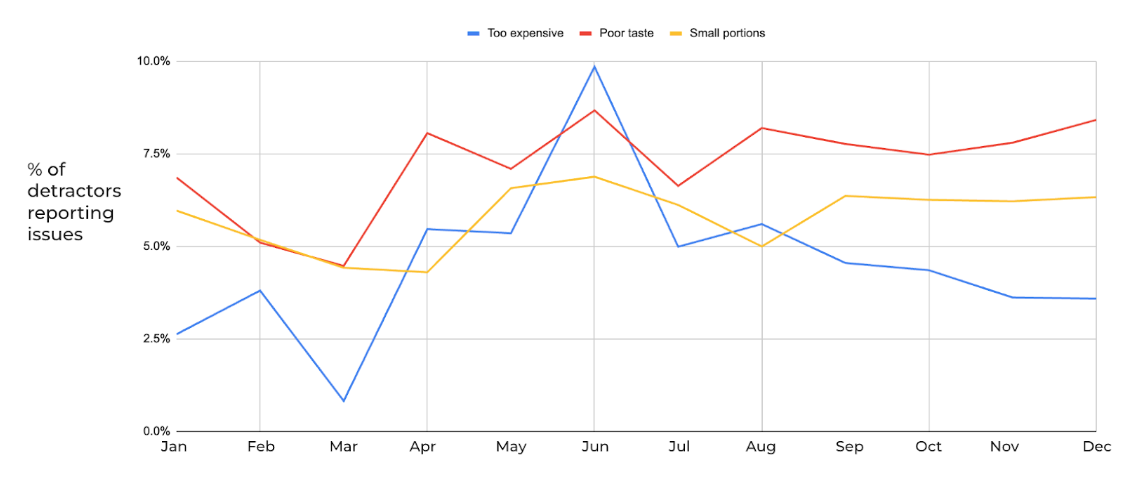
Understanding guest sentiment like this provides the confidence needed to make changes.
1. Pricing adjustments
Guest sentiment feedback software platforms, like Yumpingo, enable restaurants to adjust prices while monitoring customer sentiment.
Changes can be introduced in select venues and tested for one week to determine if a full roll-out can go ahead.
Guest sentiment tracking also allows you to know when to put prices back down once the economic situation improves to drive competitive advantage.
Dynamic pricing is part of this, particularly on service styles such as delivery, and there are a number of services that help manage this.
The immediate opportunity is the middle ground between no changes in six months and on-the-fly adjustments. This middle ground is simple and significant:
In hotels a 1% increase in price led to a 12% increase in profit.
2. Regional pricing
Pricing can vary considerably across regions in the US, where the price of Big Macs currently ranges from $3.49 to $8.09 [link https://pantryandlarder.com/mccheapest]! These pricing differences are based on financial factors, primarily, but most restaurants and groups are reluctant to implement this difference without understanding the customers’ reactions to them.
In Yumpingo’s UK research during 2022, value perception varied greatly across different regions. And the trend wasn’t linked to purely regional economic factors. With financial information aligned with customer sentiment data, decisions on regional pricing can be made much more effectively.

Value perception varied greatly across different regions of the UK in 2022
3. Portions & value perception
Carefully managing portion sizes and how they are presented has significant effects on value perception and guest sentiment. Using Yumpingo’s sentiment data, restaurants can learn how to optimize portion size and presentation of dishes to improve guest happiness.
Plating can significantly change the value perception of a dish. One UK client discovered that tortilla chips served in a pot were perceived to be of lower value by customers than the same quantity of chips served on a plate. The same client also saw increases in customer sentiment around a dish of spring rolls when it was presented on a bed of lettuce.
Portion controls and plating methods can vary greatly across and estate and sentiment data provides visibility on this for better control.
4. Substitutions
With Yumpingo you can test a new supplier’s product on your guests and rapidly understand how they affect sentiment as well as profitability.
Example 1.
Facing a price increase from their french fry supplier, a global client tested two alternate suppliers in the UK and discovered that one was less expensive and resulted in higher guest happiness. Within a month they gathered enough data to be confident in the decision to switch, saving millions in annual costs.
Example 2.
A major UK group used two onion ring suppliers across different brands. Using direct guest feedback they discovered that one product resulted in significantly higher guest happiness scores, and rolled that out to all restaurants. Satisfaction scores on those dishes jumped by 20% within a week of change.
5. Simplification
Simplified menus enable your team to both produce better meals, improving customer satisfaction, and reduce food wastage, increasing your margins.
Example 1.
One major UK client reduced the size of their menu by 25% over twelve months. The changes led to a decrease in food costs, more efficient BOH labor, and an 11 point NPS improvement.
Simplifying menu items also has an impact, enabling back of house teams to effectively deliver the ideas of the creative teams.
Example 2.
A client in the US discovered that a key dish was proving consistently difficult to execute on their soft opening, enabling them to decisively remove it from the menu before launch.
With the right information at the right time, you can be more decisive with pricing to manage margins faster and with confidence.
Ensure you are not left carrying the fallout for cost increases, and take advantage to reduce costs when the situation improves. Get six months ahead of the curve
In addition and irrespective of the economic situation there are opportunities to better manage your margins by simplification, regional pricing strategies, portion controls and substitutions. The opportunity is significant and not exploited well.
Ready to explore how guest satisfaction feedback insights can help you deliver a successful dynamic pricing strategy for your business? Book a demo today.
Share this:
Subscribe to our Newsletter
You May Also Like
These Related Stories

How to increase guest advocacy by +10%
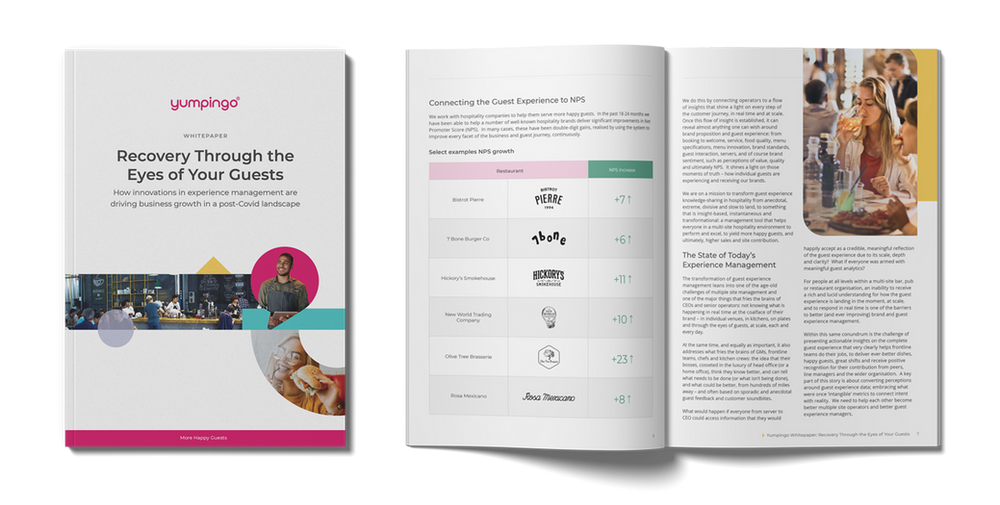
[WHITEPAPER] Recovery Through the Eyes of Your Guests.
